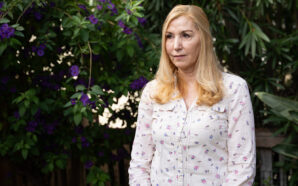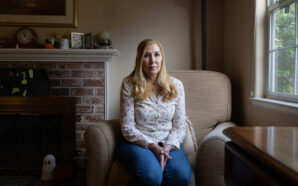Selen Ozturk
American Community Media
Although California is the state with the strongest gun safety laws in the country, a recent survey shows that 80% of Californians are concerned about how little they know about protection orders — which can temporarily remove firearms if a court finds evidence of dangerous or violent conduct — and only 30% of Californians had heard of protection orders at all.
To close this information gap, Governor Gavin Newsom has launched a Reduce the Risk campaign through the California Office of Emergency Services (CalOES) to raise awareness of the state’s protection orders, gun violence warning signs and other legal protections.
California’s Gun Violence Restraining Orders (GVROs) “empower law enforcement and other eligible community members to present evidence to a judge showing that another individual is on a dangerous pathway to gun violence or suicide and should, as a result, be prohibited by court order from possessing, accessing, purchasing or otherwise acquiring firearms related items for a temporary period,” explained Ari Freilich, director of the California Office of Gun Violence Prevention at the U.S. Department of Justice, at a Wednesday, July 30 American Community Media briefing.
Evidence of dangerousness may include “a manifesto, journal writings, social media posts or other warning signs that an individual has persistent, intrusive thoughts about committing mass violence, even if they haven’t committed a crime yet … or directed threats against any specific victim,” he continued.
Nationwide, firearms are the leading cause of death for youth under 18.
California has one of the lowest gun deaths nationwide, but the toll remains high, with roughly 3,200 Californians losing their lives annually.
If the gun death rate across the rest of the U.S. matched California’s over the past decade, there would have been nearly 140,000 lives saved and potentially hundreds of thousands fewer gunshot injuries.
Since California’s GVRO law took effect in 2016, it has become a model for similar risk protection order laws adopted in 19 other states and Washington, D.C., usually in response to a mass shooting where law enforcement knew the perpetrator but couldn’t legally, effectively disarm them in advance.
Filling the gap between mental health and criminal justice
GVROs prevent gun violence committed by people who fall “into this perfect gap between what the mental health system can do and what the criminal justice system can do, and it’s exactly the same gap that the Parkland shooter fell into. He was on people’s radar, but at that point, he was still allowed to have firearms,” said Dr. Amy Barnhorst, associate director at the Centers for Violence Prevention, psychiatry professor at the UC Davis School of Medicine, and an emergency and inpatient psychiatrist.
About 1.6% of people nationwide who attempt to purchase a firearm from a licensed dealer fail a background check.
In 2017, a year before the Parkland shooting and a year after Barnhorst helped craft California’s GVRO legislation, she was working in a mental health crisis unit in Sacramento County when FBI agents and local law enforcement brought in a community college student.
The student “had told a few close friends not to come to school on a certain date. He made allusions to having a kill list and he was posting pictures on social media of himself in military gear, holding guns,” she explained. “They said there’s no evidence that he’s committed a crime … and you can’t keep people in a psychiatric hospital just because they’re dangerous.”
“He had a lot of violent fantasies, but I didn’t really see a treatable mental illness. I wasn’t sure that any length of stay in the psychiatric hospital was going to make him less violent … but I was really afraid for him and his classmates and his family,” she continued, adding that she filed a GVRO against him under threat of a mass shooting.
Of the 58 mass shooting-specific GVROs out of a total of over 200 GVROs filed in California between 2016 and 2018, none of those mass shootings occurred.
Sergeant Kyle Ikeuchi of the Sacramento Sheriff’s Office recounted a similar incident where a 15 year old boy “starts posting on social media that he was going to come to school with a sawed-off shotgun and that people better be ready. He actually sent his friend a private message saying ‘Don’t come to school the next day. If you do, the bathroom will be safe.’”
After a mother who saw the message called the sheriff’s office, Sacramento law enforcement filed a GVRO and house search warrant for the student’s parents, as the student, being a minor, already couldn’t legally own guns.
A sawed-off shotgun was found in the bedroom of the suspect’s brother, a 17 year old on an unrelated probation. The 15-year-old was taken on a 5150 hold.
He then told the deputy transporting him “‘I keep having the same dream again and again that I shoot my best friend in the chest at point blank with the sawed-off shotgun tomorrow during second period,’” Ikeuchi explained. “Very concerning statements. So we obviously keep close tabs on this youth who is now an adult. We make sure that he’s still doing things productive in society.”
Gun violence often involves other forms of violence, added Gabriella Gonzales, a 23-year-old Reduce the Risk youth advisory councilmember: “When I was 17, I met a guy who lived near my house. He eventually asked to have sex with me many times. When I kept saying no, he escalated and threatened to shoot me if I did not comply.”
“He wanted me to meet him at the park by my house so that he could shoot me. He was very mocking, and would say ‘I can’t wait to see you start trying to run away because you’re fat,’” she continued. “I stopped responding, but he would send pictures and videos of his guns threatening to come find me and shoot me for not complying to his sexual advances. He would also send videos of him and his friends in the car driving through the neighborhoods near my house, trying to find me, and it was visible that there were guns in the car.”
“I had no idea that there were protection orders for this. I really do wish I knew,” Gonzales added. “A couple months later after this experience, the same guy got arrested for threatening to shoot up my school. He had threatened someone else.”
Filing a GVRO
In 2018, 424 GVROs were filed in California. In 2023, filings increased 528% to 2,073.
A standard GVRO is open to both law enforcement and people with a qualifying relationship with the person they’re concerned about — including family members, household members, co-workers and employers, school officials and intimate partners.
Law enforcement responding to a violent emergency can alternatively file for an emergency GVRO over the phone, which remains in effect for 5 to 21 days and requests a civil court hearing by then for a longer-term GVRO for up to five years.
The petitioner then submits a form to their local Superior Court in-person or online, providing evidence of dangerousness, whether or not that alleged person already owns firearms; a temporary GVRO is then issued within one day in effect for up to 21 days before the full court hearing.
Californians can learn more about GVROs and other gun safety resources at reducetherisk.ca.gov, a hub available in 14 languages.
“The data shows that protection orders like Gun Violence Restraining Orders do work,” said CalOES Senior Public Information Officer Chris Dargan. “We’re hoping to build on that momentum.”





